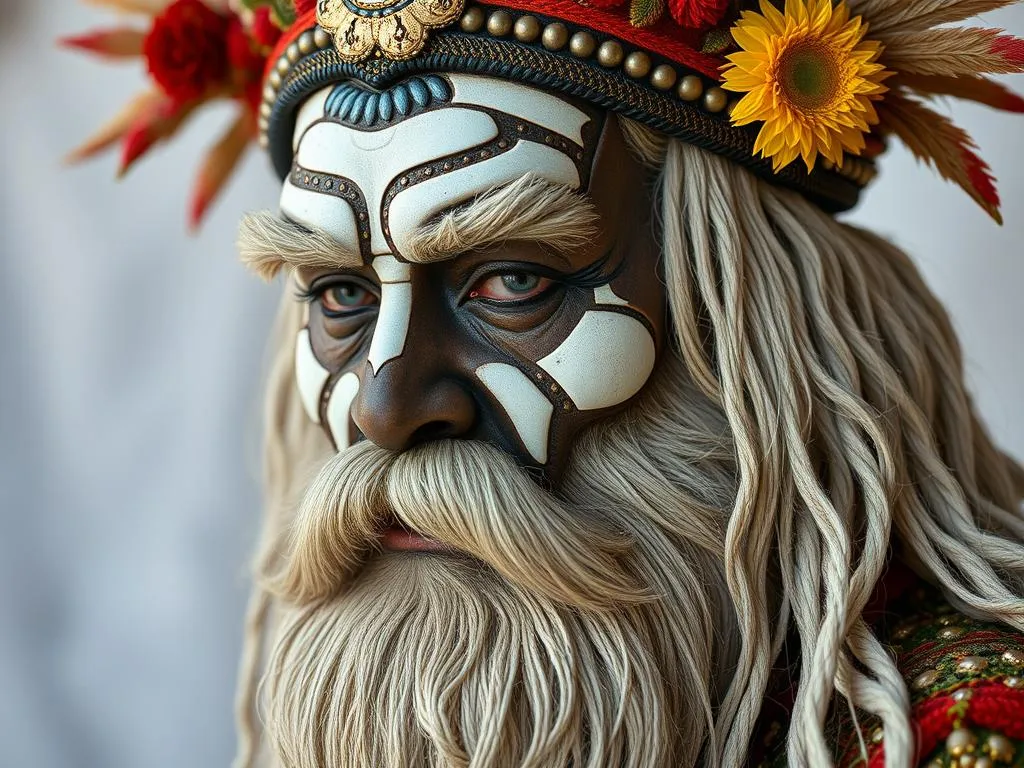
Introduction
When it comes to dog breeds, each has its own unique traits, history, and purpose, making them special companions for different types of owners. One breed that stands out for its remarkable characteristics is the Puli. Originating from Hungary, the Puli is a historical herding dog known for its distinctive corded coat and energetic personality.
This article delves into the various aspects of the Puli breed, from its fascinating history and physical traits to its care requirements and training needs. By the end of this article, you will have a comprehensive understanding of what it takes to welcome a Puli into your life.
Understanding the Puli Breed
History of the Puli
The Puli has deep roots in Hungarian culture, believed to have existed for over a thousand years. Originally bred for herding livestock, these dogs were invaluable to Hungarian shepherds, assisting them in managing flocks of sheep across the vast plains of the country. The Puli‘s herding abilities were enhanced by its agility and intelligence, traits that made it an essential part of rural life.
In addition to its practical roles, the Puli has a cultural significance as a symbol of Hungarian heritage. The breed is often featured in folklore, art, and even the national identity of Hungary. It is not just a working dog; it is a cherished companion that has stood the test of time.
Physical Characteristics
The Puli is a medium-sized dog, typically weighing between 25 to 35 pounds and standing about 16 to 18 inches tall at the shoulder. Its most distinctive feature is its coat, which consists of long, corded hair resembling dreadlocks. This unique coat provides protection from the elements and is an essential aspect of the breed’s identity.
Coat colors can vary, including black, white, gray, and even a reddish hue. Grooming a Puli requires special attention, as the corded coat can mat if not maintained properly. Regular grooming sessions are crucial to keep the coat healthy and clean, preventing skin issues that can arise from neglect.
Temperament and Behavior
The Puli is known for its lively and intelligent temperament. These dogs are highly energetic and require regular exercise to keep them happy and healthy. They are loyal and devoted to their families, often forming strong bonds with their owners.
Socialization is vital for a Puli to ensure they grow up to be well-adjusted adults. Early exposure to various environments, people, and other animals can help them develop appropriate social behaviors. They generally get along well with children and can be excellent family pets, provided they are trained and socialized correctly.
Care and Maintenance of Pulis
Grooming Requirements
Maintaining a Puli‘s corded coat is essential for their overall health. Regular grooming helps prevent mats and tangles that can cause discomfort. Owners should use tools such as metal combs or slicker brushes designed for corded coats.
Grooming frequency can vary depending on the coat condition, but generally, a thorough grooming session every few weeks is recommended. Bathing should be done sparingly to avoid stripping the coat of its natural oils; typically, a bath every few months or when the dog is particularly dirty will suffice.
Diet and Nutrition
A well-balanced diet is crucial for the health of your Puli. They require a diet high in protein and fat to support their energy levels, especially given their active nature. Quality dog food, whether kibble or a raw diet, should be chosen based on the dog’s age, weight, and activity level.
While many Pulis thrive on commercial dog food, some may have specific dietary restrictions or allergies. It’s essential to monitor your dog for any adverse reactions to food and consult with a veterinarian to determine the best diet for your Puli.
Exercise Needs
Pulis are energetic dogs that require daily exercise. A minimum of one hour of physical activity is recommended, which can include walks, runs, or playtime in a secure yard. These dogs also enjoy mental stimulation; engaging them in activities such as agility training or herding exercises can help satisfy their need for both physical and mental challenges.
Interactive toys, puzzle feeders, and training sessions can provide the mental stimulation that Pulis crave. Without adequate exercise and stimulation, they may develop undesirable behaviors such as excessive barking or chewing.
Training a Puli
Basic Training Tips
Training a Puli starts with early socialization, which is essential for this breed. Exposing your puppy to various experiences, people, and environments helps them become confident adults. Positive reinforcement techniques, such as treats and praise, are effective in teaching commands and behaviors.
Common commands to start with include “sit,” “stay,” and “come.” Consistency is key; using the same commands and rewards will help your Puli learn more effectively. Remember that patience and persistence are vital, as this breed can sometimes be stubborn.
Advanced Training and Activities
Once your Puli has mastered basic training, you can explore more advanced activities. Their natural herding instinct makes them excellent candidates for herding trials or training. Many Pulis excel in dog sports such as agility, obedience, and even flyball.
Participating in these activities not only provides physical exercise but also strengthens the bond between you and your Puli. Engaging in dog sports can also be a fun way to meet other dog owners and socialize your pet further.
Health Considerations
Common Health Issues
Like all breeds, Pulis can be prone to specific health issues. Some common conditions include hip dysplasia, eye problems such as cataracts, and certain skin issues due to their unique coat. Regular veterinary check-ups are essential to monitor for any potential health problems.
Being aware of the signs of health issues, such as limping, changes in appetite, or unusual behavior, can help address problems early. Responsible breeding practices can also mitigate some health concerns, so research and choose breeders carefully.
Regular Veterinary Care
Routine veterinary care is crucial for your Puli‘s health. Regular check-ups allow for vaccinations and screening for common health issues. Your veterinarian can recommend a vaccination schedule tailored to your dog’s needs, ensuring they are protected against preventable diseases.
Preventative measures, including a balanced diet and regular exercise, play a significant role in maintaining your Puli’s health. Keeping up with regular vet visits is an investment in your dog’s long-term well-being.
Puli in Different Living Situations
Pulis as Family Pets
Pulis can make excellent family pets, particularly for families with active children. Their playful nature and loyalty make them a wonderful addition to family life. However, it’s important to supervise interactions between dogs and young children to ensure safe and positive experiences.
Their adaptability means they can live happily with other pets, especially if socialized from a young age. Introducing a Puli to other animals gradually and in a controlled environment can foster harmonious relationships.
Pulis for Active Individuals
For those with active lifestyles, a Puli can be an ideal companion. They thrive in environments where they can run, play, and engage in various activities. Individuals or couples who enjoy outdoor adventures, hiking, or running will find a Puli to be a perfect match.
This breed’s high energy levels and intelligence make them suitable for owners who can provide the necessary exercise and mental stimulation. If you lead a sedentary lifestyle, a Puli may not be the best fit.
Living Environments
While Pulis can adapt to various living situations, they do best in homes where they have access to space for exercise and play. They can live in apartments if their exercise needs are met through regular walks and playtime.
A house with a secure yard is ideal, allowing the Puli to explore and play freely. Regardless of the living situation, providing a safe environment for your dog to express its natural behaviors is crucial.
Adopting or Buying a Puli
Adoption Considerations
Adopting a Puli from shelters or rescues can be a rewarding experience. Many wonderful dogs are looking for new homes, and adopting helps give a dog a second chance at a happy life. When considering adoption, it’s essential to evaluate the dog’s history and needs to ensure a good match for your family.
Look for Puli-specific rescues or breed clubs that can connect you with dogs in need. Many organizations also provide resources and support for new dog owners, making the transition smoother.
Buying from Breeders
If you decide to purchase a Puli, choosing a reputable breeder is crucial. A responsible breeder will conduct health tests on their breeding dogs and provide documentation of health clearances. They should also be knowledgeable about the breed and willing to answer any questions.
When visiting breeders, observe the living conditions of the puppies and their parents. Ask about the socialization practices and the environment where the dogs are raised. It’s essential to feel confident that you are bringing home a healthy and well-adjusted puppy.
Conclusion
The Puli is a unique and dynamic breed that offers a blend of loyalty, energy, and intelligence. With its rich history and distinctive appearance, it is a breed that appeals to various types of dog owners. Whether you are looking for an active companion, a family pet, or a dog to participate in sports and activities, the Puli may be the perfect fit.
By understanding the needs and characteristics of the Puli, you can make an informed decision about welcoming one into your home. With the right care, training, and environment, a Puli can become a beloved member of your family, bringing joy and companionship for years to come.







